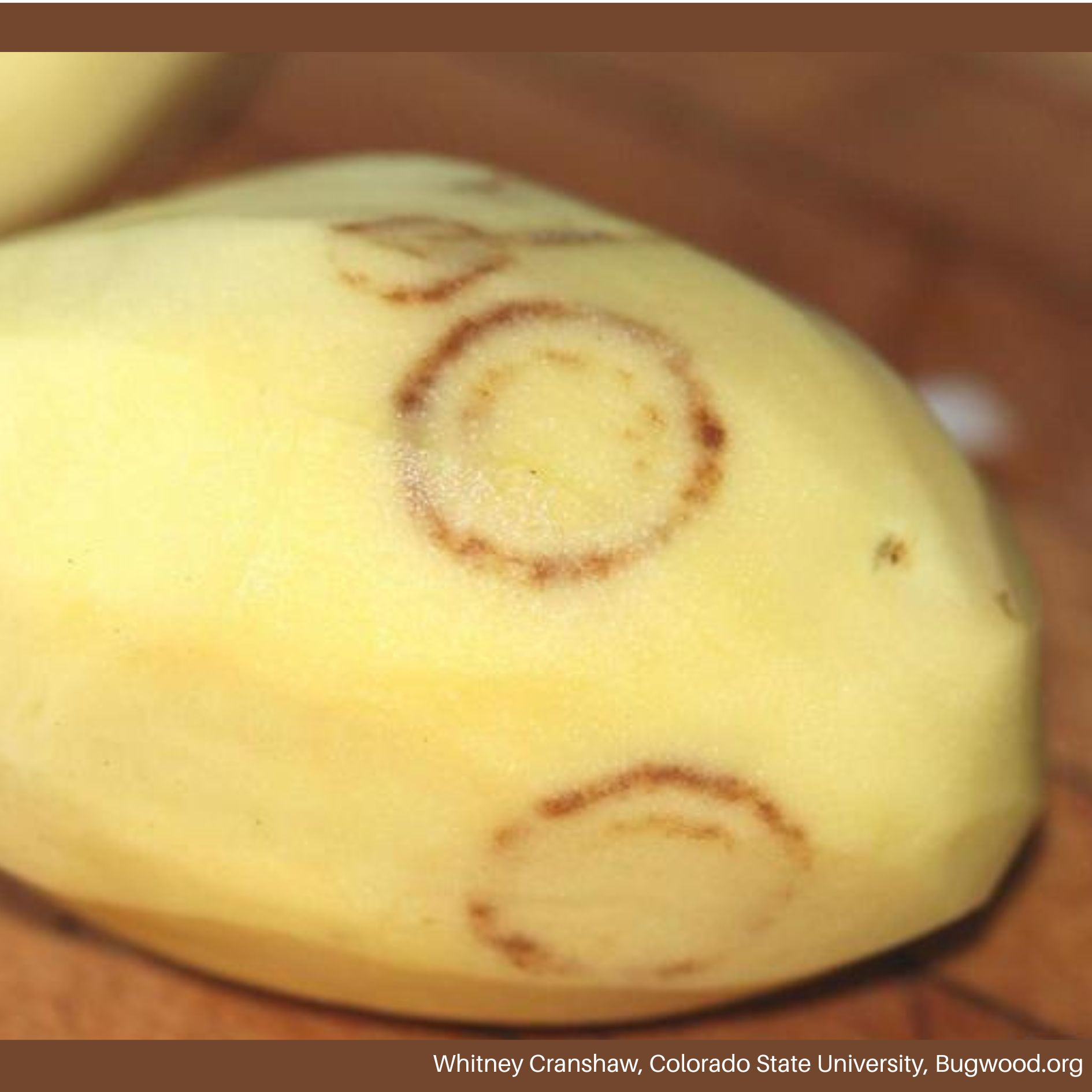Corky Ringspot
HOSTS
- Potato
DESCRIPTION
Corky ringspot occurs on potatoes infected with Tobacco Rattle Virus (TRV). TRV is not exclusive to potatoes, other plant species including other vegetables and ornamental plants can be infected with TRV. However, TRV is only referred to as corky ringspot in potatoes. The primary vector for TRV are stubby root nematodes (Paratrichodorus spp.) which spread the disease by feeding on plants. TRV can also be spread through infected seeds or contaminated tools.
BIOLOGY
When a plant is first infected with TRV, the virus will reproduce within the plant cells in the semi-fluid solution called cytoplasm. As the disease progresses, the virus will infect more and more plant cells until it reaches the phloem, part of the plant’s vascular system. Access to the phloem will allow the virus to infect all parts of the plant.
Stubby root nematodes use a specialized feeding tube to puncture and feed from plant cells in plant roots. As they feed, the nematodes will ingest the inner contents of the plant cell. If the plant is infected with TRV, the nematode will transmit the disease to the next plant it feeds on. TRV can survive within a nematode for months, but will not reproduce.
Infected plants may be asymptomatic, but will still be a potential source of infection. There is no treatment and the infected plant should be removed.
SYMPTOMS
- Arcs and spots of brown, dry tissue within the potato and on potato skin
- Yellow rings and mottling on potato foliage
GENERAL MANAGEMENT
- Use certified disease-free tubers and seeds
- Remove weeds around potato crops, as many species can host TRV and be a food source for stubby root nematodes
- Remove all infected plants as they can be a reservoir for the disease



